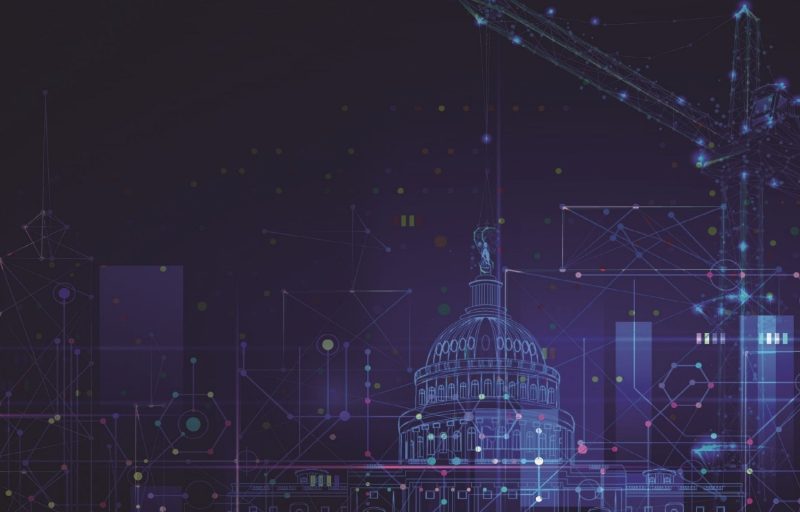How is Automated IT Revolutionizing Government Agencies?
As artificial intelligence applications become more agile and ubiquitous, government agencies
are starting to leverage new technologies to improve decision-making at every level. However,
to create an effective roadmap for AI implementation, agencies need to keep up with the latest
trends, best practices, and technology requirements for IT automation. To understand how AI
and other bleeding-edge technologies are revolutionizing local, state, and federal government,
below are insights and experiences surrounding digital transformation.
WHAT IS ARTIFICIAL INTELLIGENCE?
The term “artificial intelligence” has become a popular buzz world in IT circles over the past
decade, making it difficult to settle on a universal definition.
According to Taka Ariga, Chief Data Scientist and Director of the Innovation Lab at the Government Accountability Office, artificial intelligence is “a set of analytical methods and technologies that help deliver forward-looking outputs at scale.” In a more applied sense, AI is a collection of tradecraft that requires specific skill sets, competencies, and infrastructure to truly understand the nuances within collected data.
While there are countless vendors promising AI-enabled functionality, these capabilities are not an out-of-box tool that you buy and deploy to solve problems quickly.
HOW CAN STATE GOVERNMENT AGENCIES UTILIZE AI?
Government agencies have access to innovative and value-added AI-enabled solutions through OMNIA Partners’ competitively solicited and publicly awarded cooperative contracts. Participants can leverage cooperative purchasing to drive efficiency, effectiveness, and real savings when looking for automated IT solutions. With OMNIA Partners’ trusted government IT solutions providers like Carahsoft, agencies can be at ease knowing Carahsoft works with leading AI technology-enabled providers who can supply a roadmap on implementation for everyday decision making.
To provide added context on the impact of automated IT on government agencies, a recent survey conducted by the National Association of State Chief Information Officers and the Public Technology Institute, found that two-thirds of state CIOs across the U.S. expect AI and machine learning to be the most important emerging technologies over the next three to five years. On a wider scale, 72% of state CIOs are either deploying, planning, or considering AI adoption in some form. In terms of forecasted benefits, the NASCIO survey found that CIOs are looking to:
• Improve cybersecurity (78%)
• Reduce waste, fraud, and abuse (75%)
• Enhance citizen-facing digital services (72%)
• Streamline traffic management (64%)
• Optimize eligibility determination for social and human services (57%)
While broad, these implementation goals highlight the ways in which automated IT can improve government decision-making across different departments and jurisdictions.
THE HALLMARKS OF MODERN AI APPLICATIONS
When deployed appropriately, AI and automated IT systems can improve decision-making through data analysis and predictive modeling.
Bob Buseck, Chief Information Officer at the Mississippi Emergency Management Agency, pointed to damage assessment to help illustrate the value of IT automation. In the past, agencies would conduct damage assessments on paper or through siloed software applications, leading to a three-to-six month wait time on paperwork. By leveraging aerial imagery, damage appraisers can collect and analyze data in real-time, allowing MEMA to more quickly restore a level of normalcy to citizens impacted by natural disasters.
Despite the promising use cases for AI, government agencies must understand the
current state of IT infrastructure and data governance to create reliable solutions. Additionally,
these tools need to be implemented in a way that doesn’t overwhelm organizational capacity.
Without a clear policy or framework, agencies may struggle to create problem-centric prototypes that can be transitioned into live environments. To support wider adoption, government officials must also create multidisciplinary teams composed of professionals from different departments and backgrounds. That is why it is crucial to bring in IT experts, like Carahsoft, who understand emerging technologies and AI capabilities in the early stages to create a clear implementation roadmap and ensure AI will lead to meaningful results across all departments.
What are best practices to support the planning and deployment of automated IT within your agency?
- Start small with achievable goals
- Work with IT professionals and AI experts
- Leverage cooperative purchasing for cost-savings and an aggregate of IT solutions
- Create a balanced team of collaborators with different specializations
As the capabilities improve, AI will become increasingly contextual, allowing agencies to analyze
the kind of questions that current systems cannot answer. To be successful, government agencies must design policies, data standards, and privacy protections that will support wider adoption without introducing new vulnerabilities.
For more information about IT solutions available through the OMNIA Partners cooperative contract with Carahsoft, visit https://www.omniapartners.com/publicsector/suppliers/carahsoft-technology-corp/contract-documentation
Brought to you by:





















